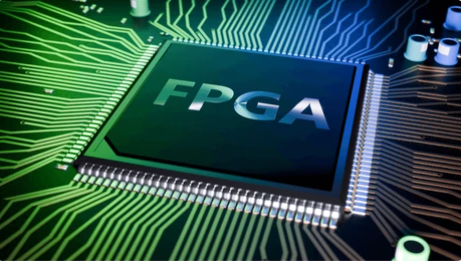Hands-On FPGA DSP: Arduino to Vivado
Code PX212
Subjects 8
Duration 8 weeks
Teaching Distance learning
* Core = self-paced; Plus = graded capstone + 1 ECTS-aligned cert; Pro = Plus + live Q&A. Hardware not included. 12-month access. 14-day refund (under 20% progress).
Overview
This professional certificate takes learners from Arduino-level familiarity to a working FPGA signal-processing pipeline in Xilinx Vivado. You will implement DDS → Framing (TLAST) → FFT → Burst → FIFO (64→8) → UART, stream results to your laptop, and reconstruct spectra in Python. The program blends just-in-time theory (sampling, FFT, fixed-point, streaming handshakes) with guided labs (simulation, constraints, bitstream, hardware debug). The capstone delivers a reproducible demo and a concise technical report.
Objectives
-
Build and explain an end-to-end 2048-point FFT pipeline on Basys-3.
-
Use AXI-Stream correctly (
tvalid,tready,tlast) and maintain frame integrity. -
Configure DDS (tuning words) and FFT IP; interpret 64-bit complex outputs.
-
Buffer/rate-match with FIFO (64→8) and stream ASCII-hex via UART.
-
Parse hex → complex in Python and plot magnitude/phase vs frequency.
-
Produce portfolio artifacts: bitstream, terminal capture, Python notebook, report.
Learning outcomes
You will be able to:
- Explain bits, bytes, hex, two’s complement, Q-formats (Q1.15/Q1.31).
- Compute sampling rate, FFT bin width Δf = Fs/N, and DDS tuning words.
- Use AXI-Stream (
tvalid/tready/tlast) and frame 2048-sample blocks. - Configure DDS (NCO) and XFFT IP; interpret 64-bit {Im,Re} outputs.
- Gate frames with a burst FSM, buffer with a FIFO (64→8), stream via UART.
- Parse 16-hex/FFT-sample to complex numbers; compute |X|, ∠, and bin index in Python.
- Simulate, constrain, program, and debug the whole pipeline on hardware.
- From Arduino to FPGA – Install tools, program the board, verify UART/LED.
- Numbers that mean something – bits, bytes, hex, two’s-complement, Q-formats.
- Sampling without surprises – Fs, frames N, Δf, coherent sampling, leakage.
- Clean data in, smart data out – AXI-Stream
tvalid/tready/tlast; frame 2048 samples. - Fast math on hardware – DDS tuning, FFT configuration; read 64-bit complex bins.
- Make it travel – Burst gating; FIFO 64→8; UART at 115200 (
CLKS_PER_BIT = fclk/115200). - See it on screen – Python parsing: hex → {Im,Re} (signed 32) → |X|, ∠, bin → spectrum plot.
- Debug & present – common pitfalls, optional ILA; finalize demo & documentation.
- Capstone: Real-Time 2048-Point FFT over UART — working demo + 2,000-word technical report.
Entry Requirements
-
Maths: basic linear algebra, complex numbers, trigonometry; first-year signals ideas (sampling, frequency) helpful but not required.
-
Programming: beginner-level in Python/Arduino (variables, arrays, simple scripts).
-
Hardware (not included): Basys-3 (Artix-7 XC7A35T) board, micro-USB cable, and either
-
a USB-to-TTL 3.3 V UART dongle to PMOD JA1 (o_Tx_Serial) + GND, or
-
use the board’s on-board USB-UART with our alternate XDC notes.
-
-
Software (free): Xilinx Vivado 2019+, PuTTY (or similar), Python (Anaconda/Miniconda recommended): Python 3.10+ with
numpy,matplotlib. -
Computer/OS: Windows 10/11 or Ubuntu 20.04+/22.04+ (macOS via VM); admin rights to install drivers.
-
Time commitment: ~2–3 hours/week for 7 weeks (≈28–30 hours total, 1 ECTS-aligned).
-
English: good writing and communication skills in English.
Efficient way of study
Every video-lecture is supported by
a text-book which consists of the
speech-text and the Power Point Presentation
No limits in education
Straightforward way of teaching

Learn on Real Hardware (Artix-7 / Basys-3)
Program an actual board, verify data in PuTTY, and reconstruct complex FFT bins on your laptop—practical skills you can show employers.
Watch Videolectures
Assignment & Project
Final viva (live video)
Get your Degree awarded
Admissions Office
99 Wall Street
Suite# 2838
New York, NY
10005, USA
Tel. +1 646 980 5595 (NY)
info@orion-university.com
Courses in Maritime
Master of Science
Postgraduate Diploma
Bachelor
Diploma
Advanced Certificates
Certificates
Career
Maritime jobs
Courses in Physics
Bachelor
Diploma HE
Certificate HE
Orion University OÜ, Registration No.: 17072956 Estonia.
Copyright © Orion University 2025

